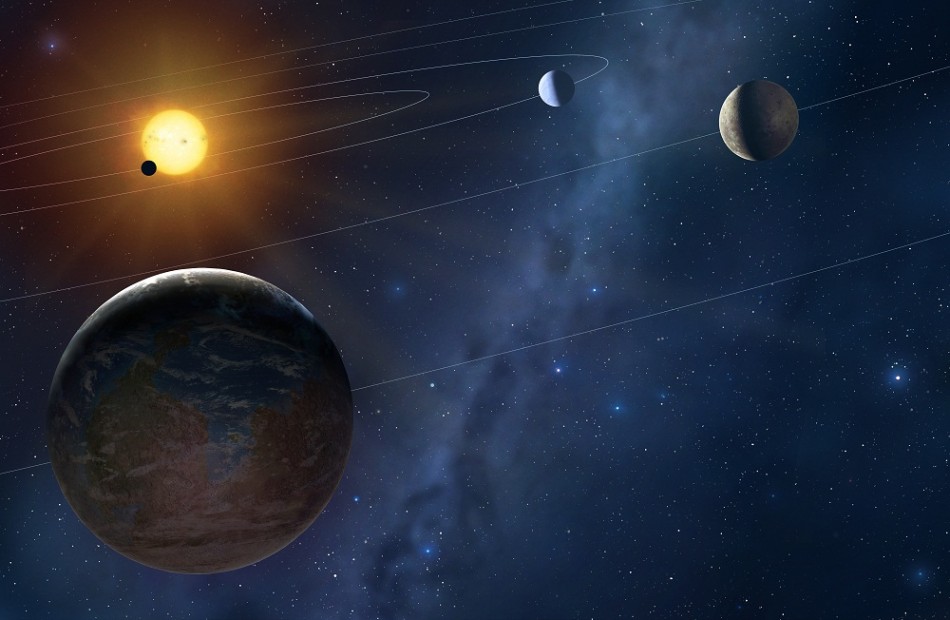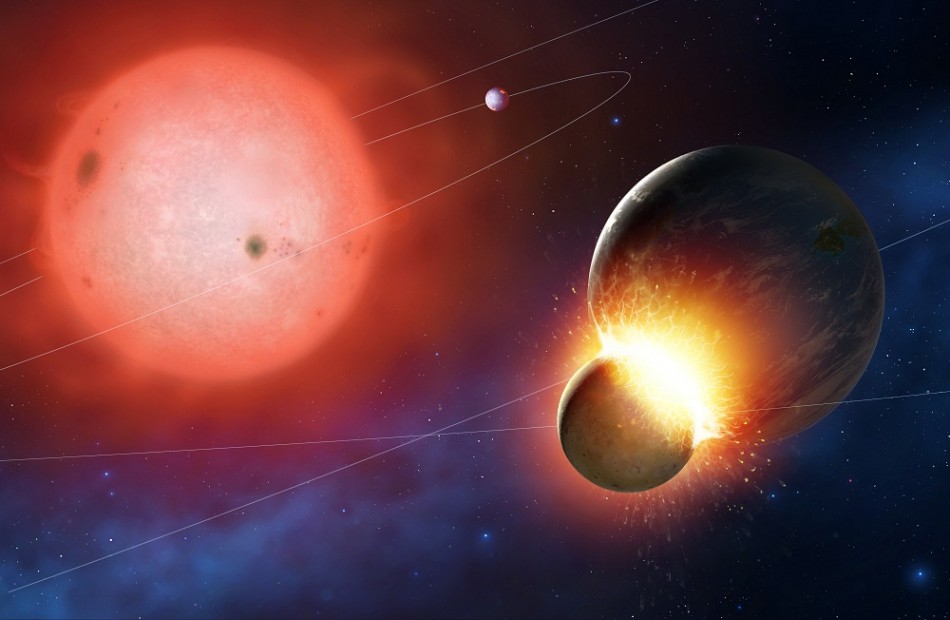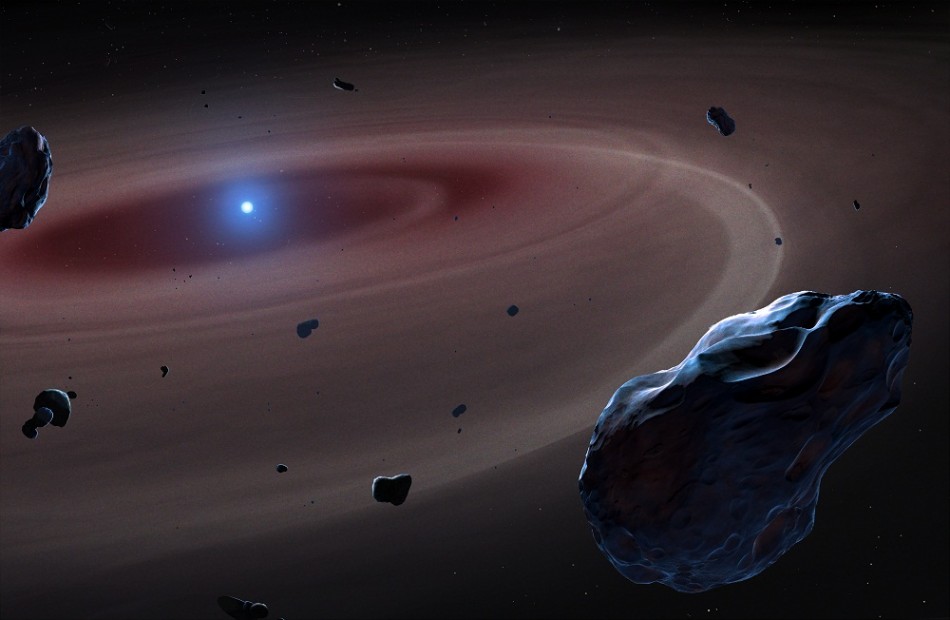Astronomers Find Major Changes Taking Place in Solar System
Astronomers caught four white dwarf stars gulping down an earth-like planet with the help of the Hubble Space Telescope. Billions of years from now, the sun could create havoc.
University of Warwick astronomers have found that the four white dwarfs were surrounded by shattered planetary bodies which once bore striking similarities to the composition of earth. When they examined the planetary bodies they found that they contained oxygen, magnesium, iron and silicon - the four elements that make up roughly 93 per cent of earth. They also contained very low proportions of carbon.
The study found that the four white dwarfs were made up of hydrogen and helium, so any heavy elements that come into their atmosphere are dragged downwards to their core and out of sight within a matter of days by the dwarfs' high gravity.
This is clear evidence that these stars once had rocky exoplanetary bodies which have now been destroyed. The observations of one particular white dwarf, PG0843+516, may also tell the story of the destruction of these worlds.
"It is entirely feasible that in PG0843+516 we see the accretion of such fragments made from the core material of what was once a terrestrial exoplanet," said Professor Boris Gänsicke, scientist at the University of Warwick, in a statement.
Scientists claim that these white dwarf stars were once like our sun. Sun-like stars become white dwarfs when they exhaust their nuclear fuel. Once the fuel gets depleted they gulp down the planets that revolve around them.
"What we are seeing today in these white dwarfs several hundred light years away could well be a snapshot of the very distant future of the earth. As stars like our sun reach the end of their life, they expand to become red giants when the nuclear fuel in their cores is depleted," said Gänsicke.
"When this happens in our own solar system, billions of years from now, the sun will engulf the inner planets Mercury and Venus. It's unclear whether the earth will also be swallowed up by the sun in its red giant phase - but even if it survives, its surface will be roasted," he added.
Astronomers also found that the sun would lose large amounts of mass and probably the planets will move further, during the transformation of the sun into a white dwarf. It may cause even bigger problems because it might lead to collisions between planetary bodies as happened in the unstable early days of our solar system.
"During the transformation of the sun into a white dwarf, it will lose a large amount of mass, and all the planets will move further out. This may destabilise the orbits and lead to collisions between planetary bodies as happened in the unstable early days of our solar system. This may even shatter entire terrestrial planets, forming large amounts of asteroids, some of which will have chemical compositions similar to those of the planetary core," Gänsicke said.
The only planet that will survive this collision will be Jupiter. "In our solar system, Jupiter will survive the late evolution of the sun unscathed, and scatter asteroids, new or old, towards the white dwarf," Gänsicke said.



© Copyright IBTimes 2025. All rights reserved.



















